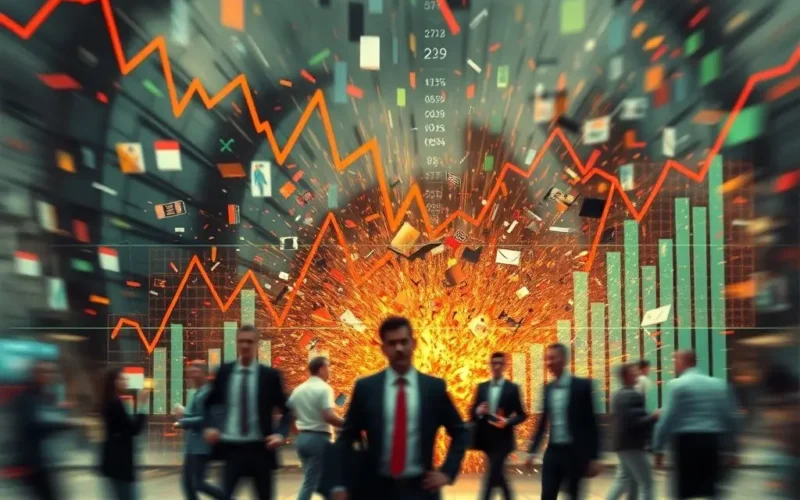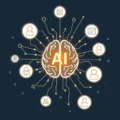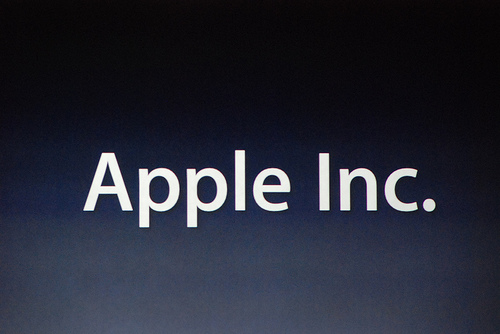Market crashes. The very words can send a shiver down an investor’s spine. They’re disruptive, often sudden, and they represent significant financial losses. For decades, economists, analysts, and investors have sought ways to predict these seismic events in the financial world. Enter Artificial Intelligence (AI). With its ability to process vast amounts of data and identify complex patterns, it seems like the perfect candidate to foresee the unpredictable. But can AI truly act as a crystal ball for stock market crashes? Or is it just another tool in the quest for financial foresight?
The allure is undeniable. Imagine having a system that could reliably warn you before the bottom falls out of the market. This isn’t just about making money; it’s about protecting wealth, mitigating risk, and navigating uncertainty with greater confidence. Yet, the reality is far more nuanced than a simple yes or no.
Table of Contents
The Enigma of Market Crashes: More Than Just Numbers
To understand why predicting a crash is so difficult, you have to appreciate the multifaceted nature of the stock market itself. It’s not just a cold collection of numbers and algorithms. It’s a complex ecosystem influenced by:
- Economic Fundamentals: Interest rates, inflation, GDP growth, corporate earnings – these form the underlying health of the market.
- Geopolitical Events: Wars, political instability, trade disputes, pandemics – external shocks can have massive, sudden impacts.
- Human Psychology: Fear, greed, panic, euphoria – these powerful emotions drive investor behavior, often leading to irrational decisions and amplifying market movements, especially downturns.
- Algorithmic Trading: A significant portion of trading is now done by automated systems, which can exacerbate volatility through rapid, interconnected transactions based on predefined rules.
- Black Swan Events: These are rare, unpredictable events that have severe consequences. By their very definition, they are outside the realm of normal expectations and historical data.
Predicting a crash isn’t just about spotting a few negative economic indicators. It often involves forecasting the confluence of several factors, including the precise moment when collective human psychology shifts from optimism or caution to outright panic.
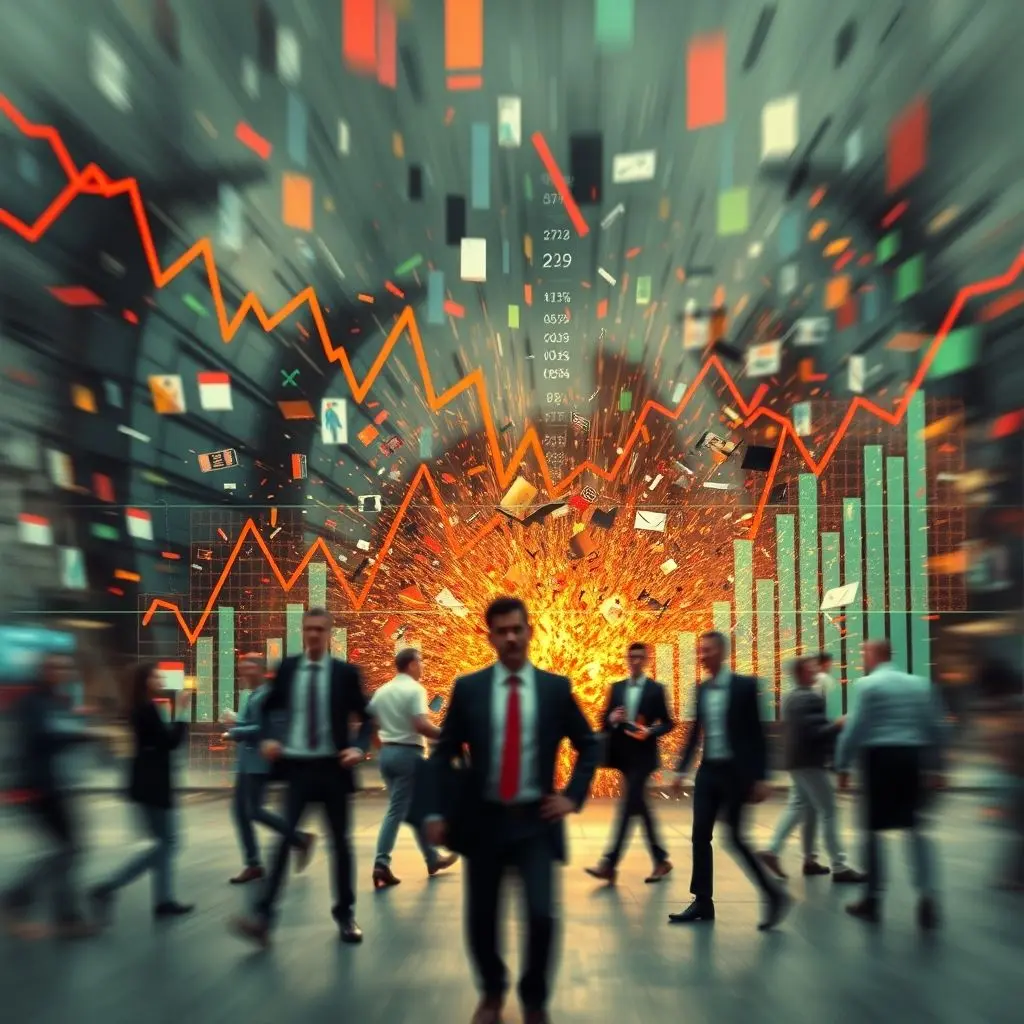
AI’s Arsenal: What It Brings to the Table
AI, particularly through machine learning, excels at processing enormous datasets at speeds and scales impossible for humans. Its capabilities include:
- Massive Data Crunching: AI can analyze historical stock prices, trading volumes, economic reports, news articles, social media sentiment, satellite imagery, and countless other data streams simultaneously.
- Pattern Recognition: It can identify subtle correlations and patterns within this data that might indicate shifts in market dynamics or emerging risks.
- Anomaly Detection: AI can spot unusual activity or deviations from expected patterns that could signal underlying stress in the system.
- Risk Assessment: By analyzing historical data and current conditions, AI models can quantify potential risks and volatilities.
- Algorithmic Trading Optimization: AI powers sophisticated trading algorithms that can react to market changes faster than humans.
These abilities make AI an incredibly powerful tool for understanding market mechanics and identifying *conditions* that might lead to volatility. It can highlight sectors under stress, spot unusual trading volumes in specific stocks, or identify negative sentiment spreading online related to an industry.
Can AI Predict *The* Crash? The Million-Dollar Question
Despite AI’s impressive data-handling skills, reliably predicting the precise timing and trigger of a major market crash remains an elusive goal. Here’s why:
Lack of Relevant Training Data
Machine learning models learn from past examples. Major market crashes (like 1929, 1987, 2000, 2008, 2020) are relatively rare events, and each is driven by a unique combination of factors. There simply isn’t a large dataset of identical crash scenarios for an AI to learn from. Training on insufficient or irrelevant data can lead to poor predictions.
Causality vs. Correlation
AI is excellent at finding correlations between data points. It might see that every time interest rates rise and unemployment ticks up, market volatility increases. However, correlation doesn’t equal causation. AI might identify patterns that *preceded* past crashes, but these patterns might not be the direct *cause*, or they might appear frequently without leading to a crash.
The Human Element and Reflexivity
Markets are reflexive – participants’ perceptions and actions influence the market itself. If an AI model became widely used and predicted a crash, the very act of people reacting to that prediction (e.g., selling stocks) could potentially *cause* or accelerate a downturn, regardless of the underlying fundamentals. This creates a complex feedback loop that’s hard for current AI models to fully capture.
It’s incredibly complex. Markets are moved by everything from algorithms to unpredictable human panic and global events. AI crunches massive data sets, identifies patterns, and spots potential risks. But predicting the exact moment of a crash? That’s a different beast.
Want a quick visual take on this challenge? Check out this short explanation:
While AI can give valuable insights and warn of conditions ripe for volatility, forecasting truly black swan events is a challenge even for the smartest tech.
The Problem of Black Swans
Events like the 9/11 attacks, the Lehman Brothers collapse, or the sudden onset of the COVID-19 pandemic were largely unpredictable and had massive market impacts. AI learns from patterns in historical data. By definition, black swan events have no historical precedent to train on, making them virtually impossible for current AI models to predict in advance.

Where AI *Really* Shines in Financial Markets
So, if AI can’t reliably call the next big crash, is it useless for navigating market downturns? Absolutely not. AI is a powerful tool, just not a perfect oracle. Its real value lies in:
- Early Warning Systems: AI can detect unusual patterns in trading volumes, order book imbalances, or sentiment that might signal increasing market stress or potential shifts *before* they become obvious.
- Volatility Forecasting: While predicting a crash date is hard, AI is much better at forecasting periods of increased volatility or potential drawdowns based on current indicators.
- Risk Management: AI can help investors and institutions better understand and manage their exposure to various risks by analyzing complex portfolio interactions.
- Algorithmic Execution: AI-powered algorithms execute trades efficiently and can adapt to changing market conditions within a predefined strategy.
- Identifying Opportunities in Downturns: During volatile periods, AI can help identify potentially undervalued assets or specific trading opportunities based on complex criteria.
Think of AI not as a prophet predicting the apocalypse, but as a highly sophisticated weather satellite. It can detect storms forming, track their potential path, and warn of severe weather conditions. It can’t tell you *exactly* when lightning will strike your house, but it significantly improves your ability to prepare and seek shelter.
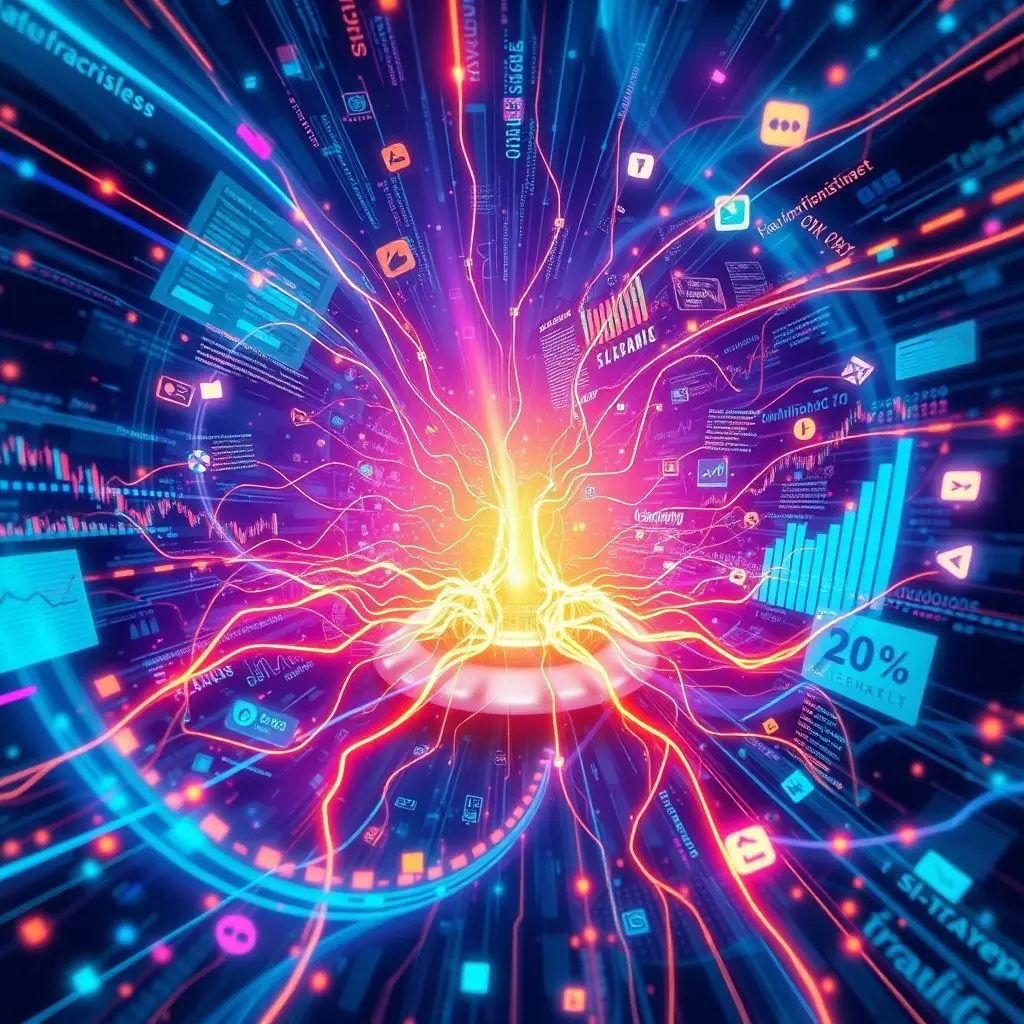
The AI-Assisted Investor: Navigating Uncertainty
The future of navigating market volatility likely involves a synergy between human expertise and AI’s analytical power. AI provides the deep data insights and pattern detection; humans provide the context, the understanding of geopolitical and psychological factors, and the final decision-making judgment.
Responsible use of AI in finance means recognizing its strengths (data analysis, pattern identification, risk quantification) and its limitations (predicting unprecedented events, understanding human irrationality, reflexivity). It’s a tool for enhancing analysis and decision-making, not replacing the need for careful judgment and a robust investment strategy that accounts for the inherent uncertainty of markets.
Frequently Asked Questions
Q: Can AI predict a specific stock market crash like the one in 2008?
A: Current AI models cannot reliably predict the exact timing, cause, and magnitude of future major crashes like 2008. These events are often driven by unique combinations of factors and unpredictable human behavior that are difficult for AI to model accurately beforehand.
Q: What kind of data does AI use for market analysis?
A: AI uses a vast array of data, including historical price and volume data, economic indicators (GDP, inflation, employment), corporate reports, news articles, social media sentiment, and alternative data sources like satellite imagery or credit card transaction data.
Q: Does AI make algorithmic trading safer during volatile times?
A: AI can help algorithmic trading systems react faster to changing conditions and manage risk within their parameters. However, rapid algorithmic trading can also *increase* volatility if systems react in similar ways simultaneously. Safety depends on the design and constraints of the specific algorithm.
Q: Should I rely solely on AI recommendations for investing?
A: Experts generally advise against relying solely on AI. While AI provides powerful analysis, human judgment is crucial for understanding context, risk tolerance, and long-term goals. AI is best used as a tool to inform human decision-making.
Beyond the Crystal Ball
So, predicting ‘the crash’ reliably? Not quite there yet, and perhaps an impossible task given the nature of markets and human behavior. But AI is undoubtedly a powerful tool for navigating uncertainty. It helps illuminate the complex currents beneath the market surface, providing valuable insights into potential risks and opportunities. As AI technology evolves, its ability to detect early warning signs and manage risk will only improve. The quest for perfect foresight continues, but in the meantime, AI serves as a crucial guide in the ever-challenging landscape of financial markets.
Data flows like digital rivers deep, but market secrets, shadows keep. AI learns, but unforeseen tides rise, predicting crashes needs more than sharp eyes. If you found this dive into AI and markets interesting, predict you’ll hit that like button and subscribe – that’s one prediction AI *can* make with certainty!
